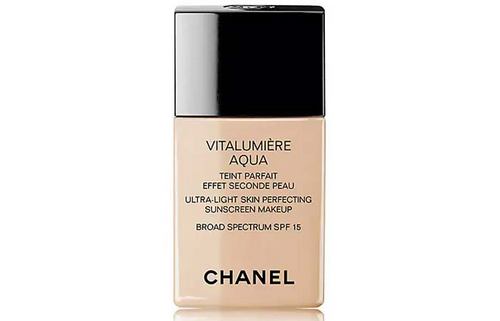With the onset of cold weather, the season of colds begins, which cause a lot of inconvenience, knocking people out of the usual rhythm of life. Symptoms of diseases are very diverse – from headache, mild malaise, to a runny nose, cough, high fever.
The use of nasal preparations should be on the recommendation and under the supervision of the attending physician. Self-medication of a common cold can lead to an advanced form of sinusitis.
In many cases, in order to prevent complications and advanced forms of the disease, it is necessary to consult a doctor to make an accurate diagnosis and prescribe a comprehensive treatment.
Since even a commonplace rhinitis (rhinitis, sinusitis), which is accompanied by an edematous and inflamed state of the nasal mucosa, congestion, secretions, is not an independent disease, but only one of the symptoms of a viral infection or an allergic reaction of the body. For the treatment of the common cold, three dosage forms of the drugs are usually used – ointment, drops and spray.
Compliance with simple rules will greatly facilitate the course of the disease and accelerate recovery:
- Dosage forms of drops or spray should be used depending on age restrictions. Drugs for children will be ineffective in treating an adult patient. And medications for adults can be harmful if they are used by an infant.
- It is necessary to familiarize yourself with the instructions before use. Exceeding the dosage and duration of treatment can be addictive and even the opposite effect.
- Self-medication is dangerous during pregnancy, not all drugs can be used, some can harm the fetus. Therefore, you can’t do without a doctor’s consultation.
- People with drug allergies are advised to read the composition of the drug before use in order to avoid the use of illegal drugs.
- If you experience a burning sensation, rapid sneezing, headache, increased swelling of the mucosa, you must stop taking the drug and consult your doctor for a replacement.
- During the illness of several family members, everyone needs to purchase a separate spray or drops, even if the same drugs are prescribed. Such precautions preclude transmission from one patient to another.
Nasal drops
Nasal drops (nasal drops) – the dosage form of nasal medications intended for the administration of drugs in the nose with a specific dosage – the number of drops.

The composition of the drops are:
- With a moisturizing effect – sodium salts are present in the composition, they are designed to moisturize, rinse and remove mucus from the inflamed surfaces of the nasal mucosa (Quickix, Aqua Maris)
- For narrowing of blood vessels – they are used to reduce the amount of formation of secretions and swelling of the mucosa by lowering the lymphatic flow (Galazolin, Sanorin, Nazivin).
- With an antibiotic – for the treatment of rhinitis caused by a bacterial infection (Fluimucil, Isofra, Polydex).
- Combined type – to achieve several goals at the same time, for example, with a viral disease with signs of an allergic reaction (Xymelin Extra, Snoop, Vibrocil).
- With an antiviral effect – with a pronounced viral infection affecting the surface of the nasopharynx (Derinat).
- With a complex of plant components (homeopathic remedy) – they are used in practice by homeopathic doctors, they have a not pronounced symptomatic effect, the main focus is on increasing immunity (Edas – 131, Euphorbium).
Nasal spray
Nasal spray is a form of medication used to administer a medication in the form of small particles of drops in the nasal passages by injection of a substance.

Varieties of sprays for their intended purpose:
- Antiallergic actions – contain antihistamines, relieve swelling, irritation of the nasal mucosa, and reduce the amount of secretions (Cromohexal, Cromoglin).
- With a vasoconstrictor effect – they remove swelling of the nasal mucosa, reduce the amount of mucus secretion (Naphthyzin, Nazivin, Ximelin Eco).
- Anti-inflammatory action – the composition includes an antibiotic, it is used for bacterial infections (Isofra, Polydex).
- For moisturizing and washing – preparations containing saline solutions, sea water, dilute sputum, moisturize the nasal mucosa and wash off viruses, bacteria, allergens from its surface, and are used in complex therapy (Salin, Aqua Maris)
- Combined drugs – include anti-allergic components, act on viruses and bacteria (Vibrocil).
- Hormonal drugs – contain glucocorticosteroids, act directly on the mucous membrane, are not absorbed into the blood, are used for allergic rhinitis, are effective on the second day (Nazonex, Flixonase).
- Containing a set of herbal components (homeopathic action) – drugs are used as an additional tool, especially for chronic forms of sinusitis, rhinitis, use with caution in case of allergic rhinitis (Delufen).
What common?
- Popularity and accessibility – both dosage forms of drugs are widespread due to the development of the modern pharmaceutical market, drugs of different price categories are presented.
- Universality – often the same medicine is available in the form of drops, and in the form of a spray.
- Ease of use – both forms of medicine are convenient, easy to use, dosing and application does not require special skills and preparation, suitable for use on the road.
What is the difference?
Comparing the two forms of drugs, it is impossible to clearly distinguish what is better and what is worse. To see a clear difference, you should talk about the ultimate goals that must be achieved.
Route of administration :
- To apply the drops, you need to blow your nose, lie on your back, tilt your head back slightly, inject the required amount of the drug into the nasal passage (if correctly injected, there should be no smack in the mouth)
- To use the spray, you need to free your nose of mucus and keep your head straight, inject the drug by pressing the dispenser, the bottle should be placed strictly upright.
Varieties of diseases :
- In the treatment of sinusitis, the drops are better suited, they can penetrate into the narrowest places of the nasal sinuses to the places of inflammation
- For allergic manifestations, a spray is preferable, because it extensively irrigates the nasal mucosa, relieving swelling and inflammation
- Saline solutions in combination therapy or for nasal hygiene are preferable to use in the form of a spray, this form of medication gives the greatest effect, washing the surface of the mucosa
- With otitis media, when it is necessary to remove the swelling of the nasopharynx, nasal mucosa, drops are better suited, it is easier for them to penetrate into the most inaccessible areas.
The degree of effectiveness – the same drug can be effective in the form of drops, but not give the desired result in the form of a spray.

Dosage accuracy :
- The droplet form of the drug gives the most accurate dosage when used, in this case it is difficult to make a mistake and prevent the excess of the drug
- The spray is used by pressing the dispenser, and the pressure can be different, so the dosage accuracy here may be different.



